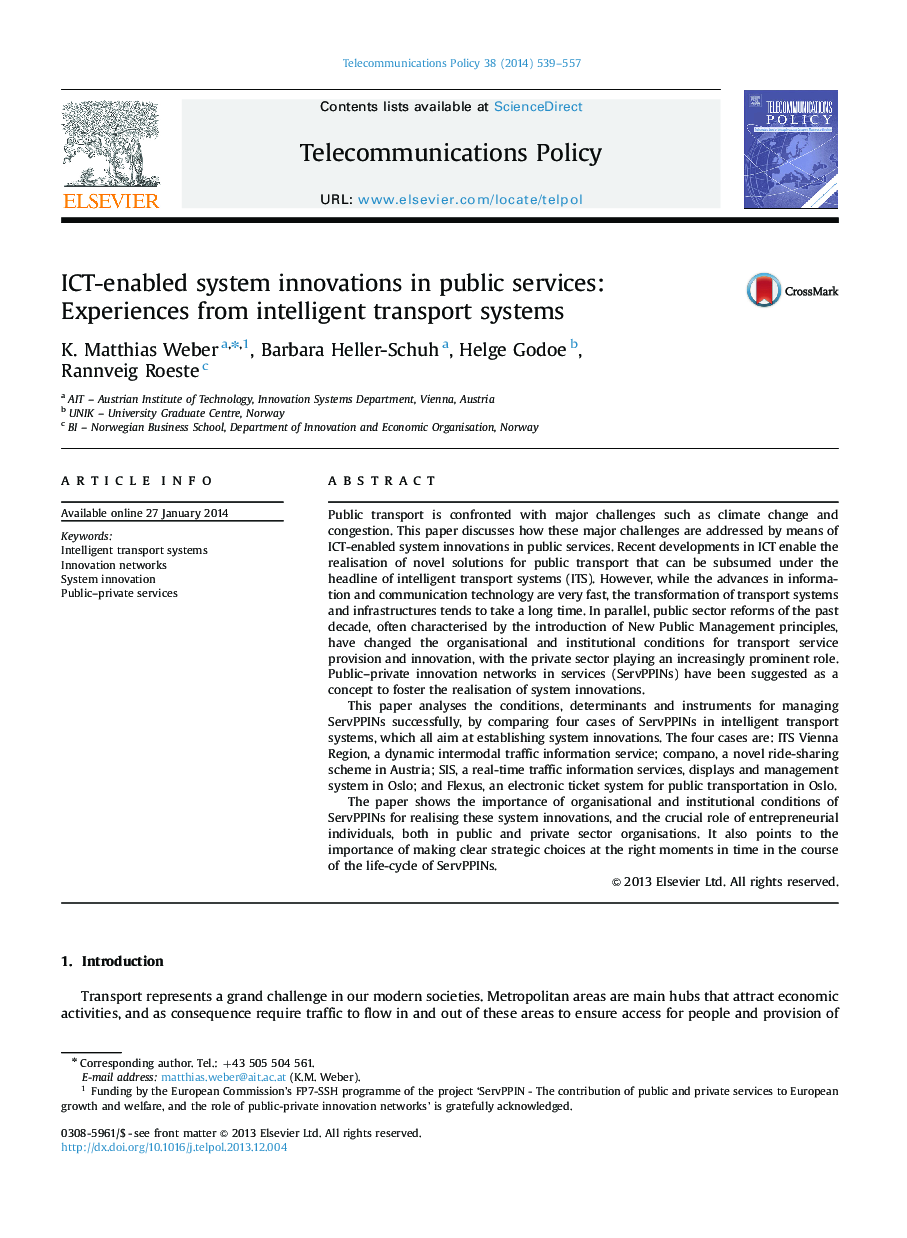| Article ID | Journal | Published Year | Pages | File Type |
|---|---|---|---|---|
| 557303 | Telecommunications Policy | 2014 | 19 Pages |
•We develop a conceptual and analytical framework for studying public–private innovation networks in transport services.•We analyse determinants of system innovations, differentiated by locus and phase of the innovation diffusion process.•We compare four cases of intelligent transport systems in Austria and Norway.•Two different model pathways are suggested how successful system innovations in public services can be realised.
Public transport is confronted with major challenges such as climate change and congestion. This paper discusses how these major challenges are addressed by means of ICT-enabled system innovations in public services. Recent developments in ICT enable the realisation of novel solutions for public transport that can be subsumed under the headline of intelligent transport systems (ITS). However, while the advances in information and communication technology are very fast, the transformation of transport systems and infrastructures tends to take a long time. In parallel, public sector reforms of the past decade, often characterised by the introduction of New Public Management principles, have changed the organisational and institutional conditions for transport service provision and innovation, with the private sector playing an increasingly prominent role. Public–private innovation networks in services (ServPPINs) have been suggested as a concept to foster the realisation of system innovations.This paper analyses the conditions, determinants and instruments for managing ServPPINs successfully, by comparing four cases of ServPPINs in intelligent transport systems, which all aim at establishing system innovations. The four cases are: ITS Vienna Region, a dynamic intermodal traffic information service; compano, a novel ride-sharing scheme in Austria; SIS, a real-time traffic information services, displays and management system in Oslo; and Flexus, an electronic ticket system for public transportation in Oslo.The paper shows the importance of organisational and institutional conditions of ServPPINs for realising these system innovations, and the crucial role of entrepreneurial individuals, both in public and private sector organisations. It also points to the importance of making clear strategic choices at the right moments in time in the course of the life-cycle of ServPPINs.
